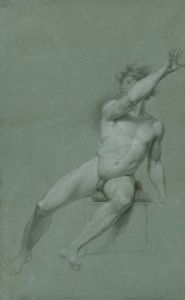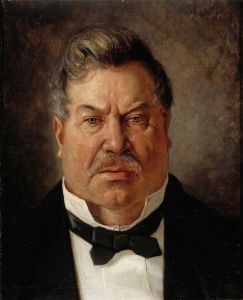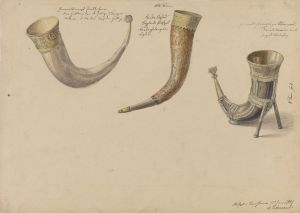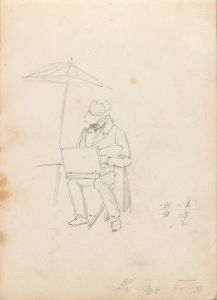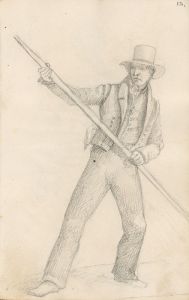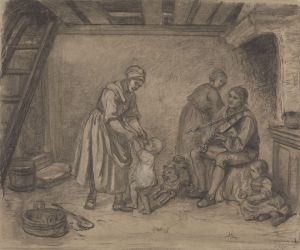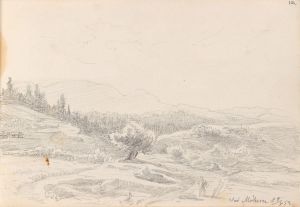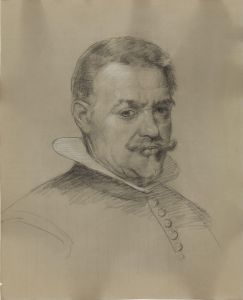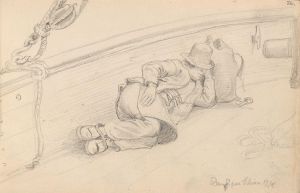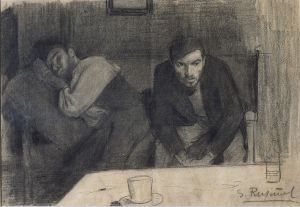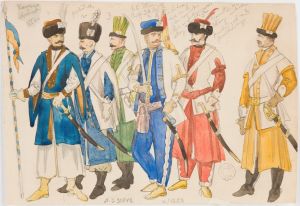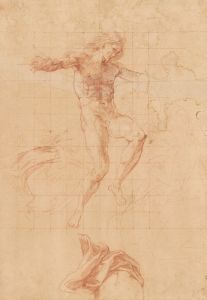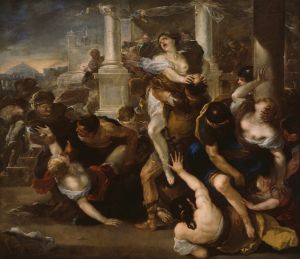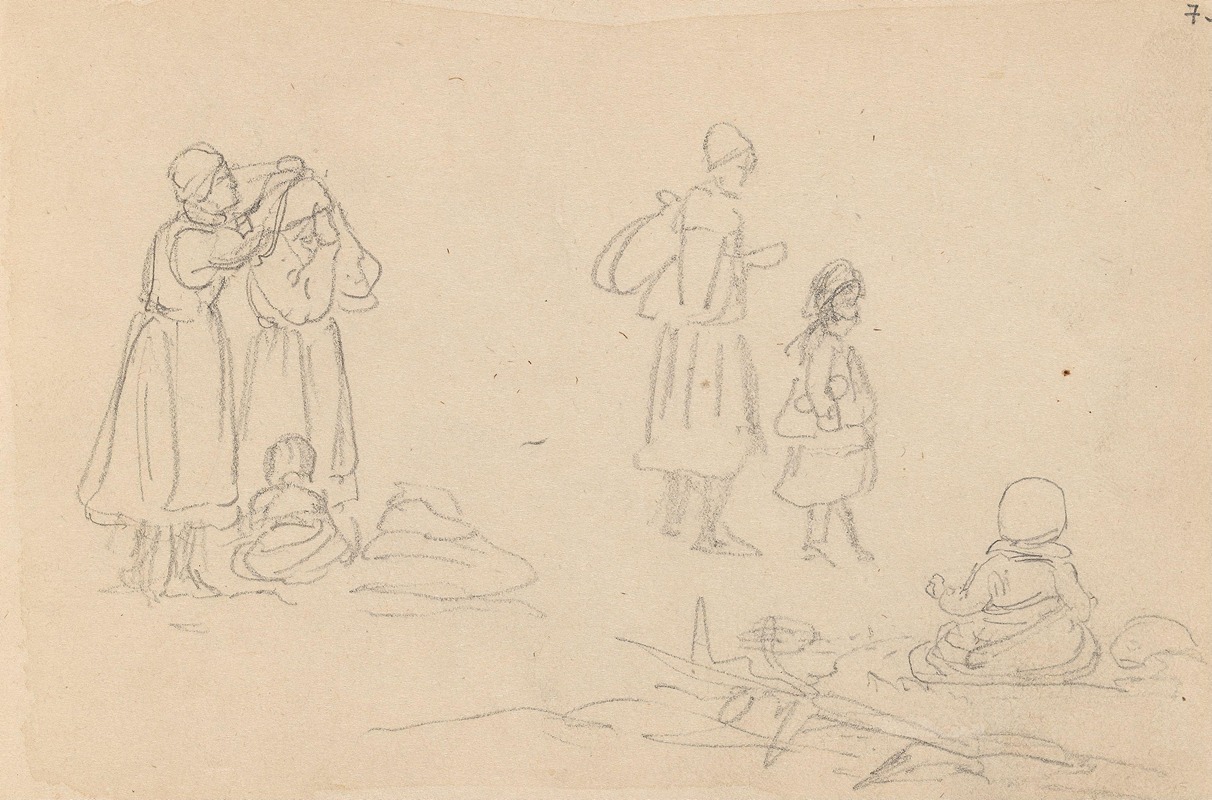
Figurstudier
A hand-painted replica of Adolph Tidemand’s masterpiece Figurstudier, meticulously crafted by professional artists to capture the true essence of the original. Each piece is created with museum-quality canvas and rare mineral pigments, carefully painted by experienced artists with delicate brushstrokes and rich, layered colors to perfectly recreate the texture of the original artwork. Unlike machine-printed reproductions, this hand-painted version brings the painting to life, infused with the artist’s emotions and skill in every stroke. Whether for personal collection or home decoration, it instantly elevates the artistic atmosphere of any space.
Adolph Tidemand was a prominent Norwegian painter in the 19th century, known for his detailed and culturally significant works that often depicted Norwegian folk life and traditions. One of his lesser-known works is "Figurstudier," which translates to "Figure Studies" in English. This piece is a testament to Tidemand's skill in capturing the human form and his dedication to studying the nuances of human anatomy and expression.
"Figurstudier" is not a single painting but rather a collection of sketches or studies. These studies were likely preparatory works for Tidemand's larger compositions. Artists of Tidemand's era frequently created such studies to refine their understanding of human anatomy, poses, and expressions before committing to a final piece. This practice was essential for achieving the level of realism and detail that Tidemand is celebrated for in his more famous works.
Adolph Tidemand was born on August 14, 1814, in Mandal, Norway. He studied at the Academy of Art in Copenhagen and later at the Kunstakademie Düsseldorf, which was a hub for many artists of the time. The Düsseldorf school of painting, where Tidemand was a prominent figure, emphasized detailed landscapes and genre scenes, often with a focus on everyday life and historical accuracy. This background influenced Tidemand's approach to art, where meticulous studies like "Figurstudier" played a crucial role in his creative process.
The significance of "Figurstudier" lies in its role in Tidemand's artistic development and its contribution to his larger body of work. These studies allowed Tidemand to experiment with different poses and expressions, which he would later incorporate into his genre paintings. His ability to depict the subtleties of human emotion and interaction is evident in his more renowned works, such as "Haugianerne" and "Brudeferden i Hardanger," where the figures are rendered with a lifelike presence that can be traced back to his detailed studies.
While "Figurstudier" itself may not be as widely recognized as Tidemand's completed paintings, it provides valuable insight into his artistic process. It highlights the importance of preparatory work in achieving the depth and realism that characterize his oeuvre. These studies are a testament to Tidemand's dedication to his craft and his commitment to portraying Norwegian life with authenticity and respect.
Adolph Tidemand's legacy is marked by his contribution to Norwegian national romanticism, a movement that sought to capture the spirit and identity of Norway through art. His works, including the studies like "Figurstudier," played a significant role in shaping the visual narrative of Norwegian culture during the 19th century. Tidemand passed away on August 25, 1876, but his influence continues to be felt in the art world, particularly in Norway, where his works are celebrated for their historical and cultural significance.
In summary, "Figurstudier" by Adolph Tidemand is an important collection of figure studies that showcases the artist's meticulous approach to capturing human form and expression. These studies were integral to his artistic process, contributing to the lifelike quality and emotional depth of his larger compositions. Through works like these, Tidemand has left a lasting impact on the portrayal of Norwegian culture and history in art.





